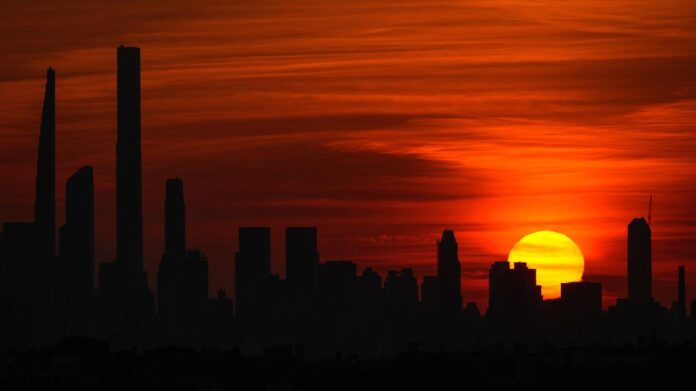
Jannik Sinner enjoyed the electrifying atmosphere in New York. Shortly before midnight, the world number one was celebrated by the fans under the floodlights in Arthur Ashe Stadium for his entry into the quarterfinals of the US Open. “This is great,” enthused the top favorite.
The atmosphere in the world’s largest tennis stadium is incomparable, especially in the evening. But it can also be completely different. When the Chinese Zheng Qinwen recently set the record for the latest women’s match at the US Open at 2:15 a.m., only a few hundred fans were left in the stands.
For years, the tennis scene has been debating the nonsense and dangers of the seemingly endless night shifts. The organizers in New York actually wanted to curb these with a new regulation. But instead, Alexander Zverev also ended his third-round match after half past two – the second latest end in US Open history. Ex-professionals and the players’ union are sounding the alarm.
What (ex) professionals say
Recommended editorial content
Here you will find external content selected by our editors that enriches the article with additional information. You can display or hide the external content with one click.
I agree to the external content being displayed to me. This means that personal data can be transmitted to third-party platforms. You can find more information about this in the data protection settings. You can find these at the very bottom of our page in the footer, so that you can manage or revoke your settings at any time.
“The scheduling in tennis is total chaos,” complained the recently retired Briton Andy Murray. “It looks so amateurish when matches go on until two, three, four o’clock.” The former world number one concluded his tirade with a request to the professional organizations and the Grand Slam organizers: “Clear this up.”
This year, the organizers of the US Open have introduced a new time policy. If a match has not started by 11:15 p.m. local time because the court is still blocked by the previous match, it can now be moved to another court. “I think this is a good start,” said US star Coco Gauff, who has already complained about the late matches in the past: “I definitely think it’s not healthy and not fair for those who have to play so late because it ruins their schedule.”
However, the new rule has not yet been applied in New York – for example, the third round match of Belarusian Aryna Sabalenka did not begin until after midnight at 0.07 a.m. This was also at the request of the world number two, who preferred to play in Arthur Ashe Stadium as planned rather than in a smaller arena.
This is what the players’ union says
“Decisions must be made earlier about when to change places. There needs to be more predictability about when the professionals will play,” Romain Rosenberg of the players’ union PTPA told the German Press Agency in New York.
According to PTPA, the total number of night matches at Grand Slams has doubled since 2018. In addition, the chance of a player getting injured is 25 percent higher in a late match. “More focus needs to be placed on the health of the players,” says Rosenberg. “It’s no wonder that players pull out of tournaments, broken and injured. The physical and mental fatigue is real.”
When the pros in New York play until two o’clock, they are usually not in bed before five o’clock after treatments, media appointments and the trip to the hotel in Manhattan. But it can go even later. At the French Open this year, a five-set match by Novak Djokovic lasted until 3:07 a.m. The Grand Slam record is held by Lleyton Hewitt and Marcos Baghdatis when Hewitt won the Australian Open in 2008, when he played until 4:34 a.m. The latest match in tennis history was played by Zverev until 4:55 a.m. in Acapulco (Mexico).
This is what Alexander Zverev says
“I don’t need any more records,” joked the Hamburg native after his night shift at this US Open. “Maybe the night sessions could start earlier. But you have no control over that. The matches before were long. There’s not much the tournament can do about it, you can’t blame anyone.”
This is what the organizers say
The organizers point out that it is difficult for New York spectators to be at the facility in eastern Queens after work until 7 p.m. Then the night session begins with two matches – at the beginning of the tournament on two courts. The US Open also prides itself on ensuring gender equality in the scheduling – unlike the French Open.
“It’s part of the appeal. It’s something our fans love,” said Lew Sherr, CEO of the US Tennis Association, which organizes the event – and referred to New York’s slogan: “It’s the city that never sleeps.” Not even when it comes to tennis.
© dpa-infocom, dpa:240903-930-221348/1
This is a message directly from the dpa news channel.
